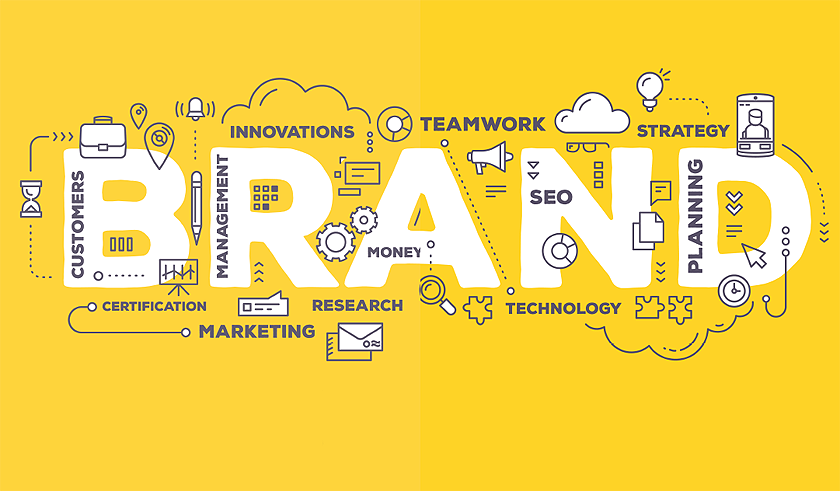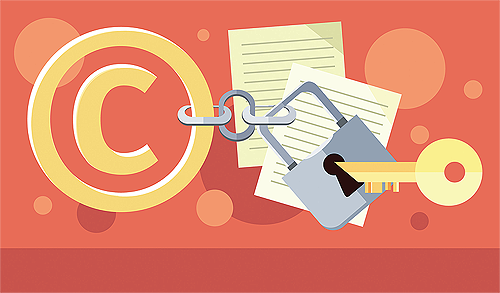
Brand aid
A brand may be the company’s most significant asset in today’s digital marketplace. An evocative brand will influence people in virtually every aspect of their daily lives, from what morning beverage they drink to the select television shows they watch before they fall asleep. A brand can invoke an infinite array of human perceptions from a desire to eat or quench one’s thirst to a desire for prestige or trust. A brand thereby links people to products and drives emotions to seek out the product. Whether basic necessities or luxury products, well developed brands are gradually built over time to excite and incite consumers to be loyal and habitual product purchasers.
Apart from the practical use of a product, first-time and repeat purchase decisions alike are often driven by how well the brand appeals to and aligns with a consumer’s personal identity. Does the consumer trust the brand? According to a 2019 Edelman report, 81 percent of consumers said they need to trust a brand before an actual product purchase. As of late, social media has been a major influence on how branded products are perceived to a broad and diverse consumer community. In today’s interconnected digital world, every action a company takes respecting its brand is immediately seen by thousands, if not millions, of consumers, and also is scrutinized for meaning from the public at large. In a world of instant and ubiquitous digital information flows, a brand can suddenly and unwittingly be affected by the politics and social movements of its owners, consumers, and sponsors. More than ever, there is a critical need to address these stakeholders with a singular well-conceived brand voice to uphold the unique and positive public perception of the products and lifestyles your brand is associated with.
Two key areas to protect a company’s brand are: (1) establishment of a focused brand voice and (2) a proactive policy to defend against counterfeit products.
A focused brand voice is essential
Brands are in the midst of unprecedented levels of public interaction that transcends mere product-consumer relationships. Digital and other social media’s ripple effect has intensified public scrutiny of a brand’s voice, thus increasing accountability beyond the consumer realm. Social and political debates have spilled into the corporate realm from Make America Great, #MeToo, and Black Lives Matter movements in America to Hong Kong and Xinjiang protests internationally impacting products by consumers holding brands responsible for both intentional and unwitting narratives connected to respective brands. Brands that defy their audience’s norm risk being ‘canceled’ by their community, which includes consumers. This added  political and societal responsibility demands a company’s need for a well-conceived and focused brand message to thwart any adverse consequences that may tarnish its brand.
political and societal responsibility demands a company’s need for a well-conceived and focused brand message to thwart any adverse consequences that may tarnish its brand.
With the multitude of political, societal, and other events confronting your brand daily, it’s increasingly difficult to control your brand voice single-handedly. Brand protection strategies that are thought-out in advance are fundamental to managing the inherent risks of operating in today’s digitally evolving environment.
A proactive defense against counterfeit products
Now that you have built a well-recognized brand at considerable time and expense, you need to protect yourself from the inevitable fraudsters who are out there to steal your brand by selling counterfeit articles. As Manhattan’s infamous Canal Street attests, knockoff merchandise is not a new problem facing the retail sector. With a digital marketplace accessible to domestic and international counterfeit goods purveyors, the threat of counterfeit goods is growing and now affects nearly every product category. Over the years, counterfeiting has steadily climbed to 3.3 percent of world trade, according to a 2019 report by the Organization for Economic Co-operation and Development (OECD).
A close cousin of counterfeiting goods is brand copyright infringement. The alleged copyright infringement from hip-hop musician Lil Nas X and MSCHF is a perfect illustration of a grand scale rip-off. As a part of a publicity campaign for the rapper’s latest music video, fraudsters distributed an unauthorized limited sale of ‘Satan Shoes’ that bore the unmistakable Nike swoosh. Currently undergoing a legal settlement, the imitation sneakers are being pulled off the market. While this scandal is unique in that it was publicized on a global stage, clearly signifying Nike does not support the meaning behind the ‘Satan Shoes’, not all companies have the opportunity or deep resources to protect their brand voice in such an aggressive or public fashion.
Beyond being robbed of revenue, brand copyright infringement and counterfeit product production and sale have far-reaching and often devastating consequences. Each interaction with a consumer, whether new or existing, holds the opportunity to establish a long-lasting and loyal customer. Additionally, more than ever, brands are held accountable for their message, and vendors masquerading as a brand jeopardize that image.
Protection Across Geography & Product Verticals:
IP protection is a proactive but necessary tool that reinforces brand integrity and personality. In an ideal world, protection should encompass all original materials associated with the brand and product, from logos, product design to naming rights. Two essential elements to consider that many companies fail to integrate into coverage plans are geography and product verticals.
While technology empowers companies to reach a diverse array of customers across the globe, consequently, this means brands are operating in countries with varying degrees of intellectual property protection and law enforcement practices. An all-encompassing strategy identifies where the brand has a geographical footprint and in which verticals to ensure adequate contractual precautions are in place.
Online Monitoring & Enforcement:
The rapid advancement of technology acts as a double-edged sword. Technology underpins our global marketplace while also serving as a safe haven for third-party vendors to pirate and cyber squat. Successfully protecting a brand voice centers around the ability to uncover and address counterfeiting attempts. Obtaining a proper online monitoring and enforcement system dedicated to tracking down counterfeit and diverted traffic, identifying the sale of unauthenticated products, and pinpointing social media handle infringement is critical in battling new-age counterfeiting.
Being sensitive to the political and social turmoil swirling around consumers, a focused brand voice must be consistently communicated to influence the public’s perception of your brand. Business leaders need to communicate brand values and expectations to consumers, employees, and vendors clearly; the latter is especially important for licensing contracts to ensure manufacturers and retailers project the brand’s carefully curated image.
As the retail landscape and nature of consumerism change, so, too, must brand IP owners in response to protect their property. Overall, implementing a multi-faceted brand protection program is vital in today’s digital era in order to mitigate against the potential catastrophic damage caused by the wrong messaging or ruinous counterfeiting.
 Global Licensing Group
Global Licensing Group
Anna Knight is VP of the Global Licensing Group. The Global Licensing Group at Informa Markets is the licensing industry’s leading tradeshow organizer and media partner. Its mission is to provide licensing opportunities around the world by bringing brands and products together. The following events and information products are produced for the licensing industry by the Global Licensing Group at Informa Markets: Festival of Licensing, Licensing Expo, Brand Licensing Europe, Licensing Expo Japan, Licensing Expo Shanghai, Licensing Week Virtual and The Licensing Leadership Summit, License Global magazine, License Global Daily E-News and Brand EXT. Global Licensing Group events are sponsored by Licensing International.
www.thegloballicensinggroup.com/en/home.html